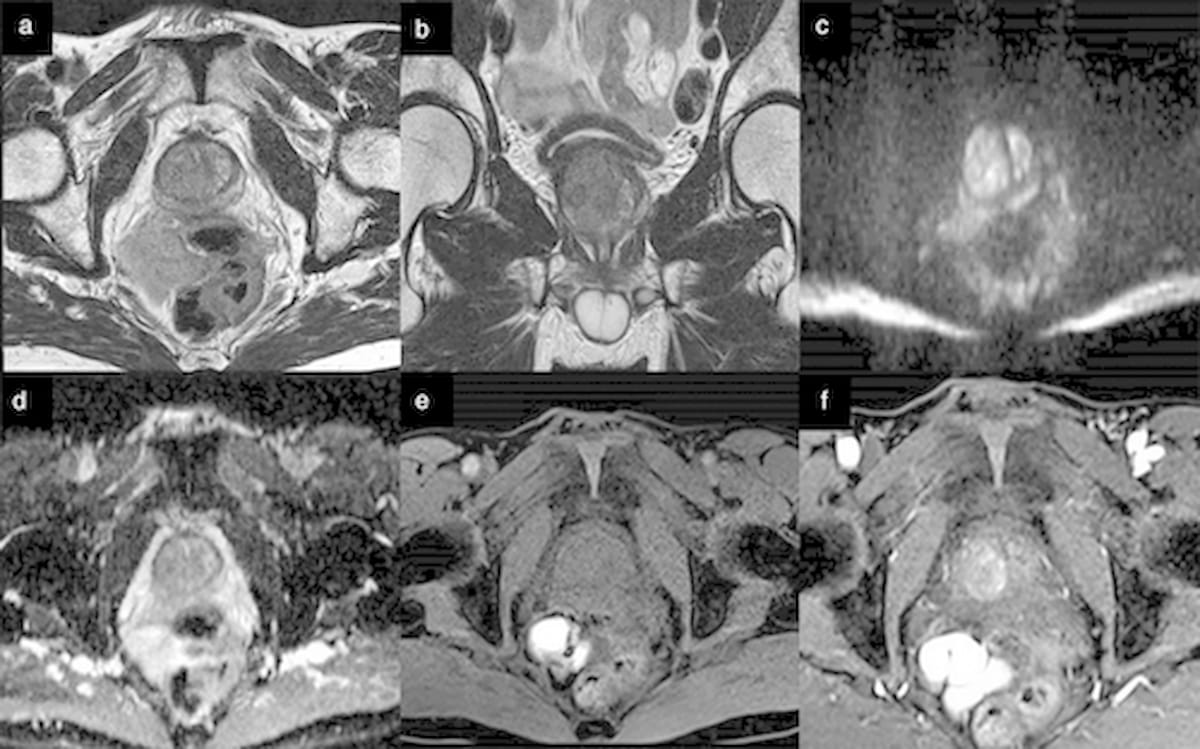Seven Takeaways from Recent Review on Prostate MRI Imaging Quality
In a recently published literature review, researchers examined the potential impact of advanced sequences, scanners, patient preparation and AI on image quality for prostate MRI exams.
Does the combination of deep learning reconstruction (DLR) and diffusion-weighted imaging (DWI) have an impact in prostate cancer (PCa) detection on magnetic resonance imaging (MRI)? Does pre-MRI enema use facilitate improved diagnosis of clinically significant PCa (csPCa)? Does the PI-QUAL scoring system bolster sensitivity for extraprostatic extension (EPE)?
In a new literature review, recently published in the Journal of Magnetic Resonance Imaging, researchers considered those questions and many more in their examination of prostate MRI imaging quality. Here are seven takeaways from their review.
1. With the exception of cases involving metallic devices and implants, 3T MRI scanners are preferred over 1.5T scanners, according to PI-RADS guidelines. Researchers have also noted that 3T MRI offers better signal-to-noise (SNR) and contrast-to-noise (CNR) ratios as well as subjective image quality. However, the authors also pointed out that a 2022 meta-analysis and other research have shown no statistically significant difference between 1.5T and 3T MRI for the diagnosis of PCa.
2. While the review authors emphasized caution with the use of endorectal coils (ERCs) due to possible supplementary artifacts, they noted three studies that demonstrated higher sensitivity for PCa detection, including one study showing a 31 percent increase in the diagnosis of clinically significant PCa (csPCa) with the use of ERCs. However, the review authors said other research on PCa detection with ERCs has been mixed and acknowledged a similar variety of findings when comparing 1.5 T MRI plus ERC to 3 T MRI.
3. In comparing three-dimensional weighted imaging (3D T2-WI) to two-dimensional weighted imaging (2D T2-WI), researchers have noted that 3D T2-WI offers better artifact assessment as well as improved visualization of internal prostate anatomy and the genitourinary diaphragm in comparison to 2D T2-WI. However, the review authors pointed out that 2D T2-WI provides superior image sharpness, better SNR in the peripheral zone and visualization of seminal vesicles. Multiple studies have demonstrated no significant differences between 3D T2-WI and 2D T2-WI for diagnosing or staging PCa, according to the review authors.
The prostate MRI study had a PI-QUAL score of 3. One can see T2-weighted imaging and an apparent diffusion coefficient (ADC) map (C) as well as pre-contrast (D) and dynamic contrast-enhanced (DCE) imaging. The review authors noted the presence of motion artifacts on T2-weighted imaging and rectal distension artifacts on diffusion weighted imaging. (Images courtesy of the Journal of Magnetic Resonance Imaging.)

4. In regard to the use of deep learning reconstruction (DLR) with diffusion-weighted imaging (DWI), researchers have noted improved SNR and CNR but only one out of four studies have found improved subjective image quality with DLR for prostate imaging. For detection of PCa lesions and extraprostatic extension (EPE), the review authors pointed out no differences between conventional MRI and the combination of DLR and DWI.
5. Researchers have found that use of the PI-QUAL score, a standardized system for assessing the quality of multiparametric MRI (mpMRI), has facilitated improved detection of EPE. Specifically, the review authors noted research that demonstrated higher EPE sensitivity and specificity with PI-QUAL > 4 in comparison to PI-QUAL < 3. However, they also acknowledged that two separate studies, published in 2023, found no significant difference between the aforementioned PI-QUAL quality assessments in detecting EPE or staging PCa.
(Editor's note: For related content on prostate cancer imaging, click here.)
6. Do anti-peristaltic medications have an impact on prostate MRI quality? The review authors noted mixed evidence on the use of hyoscine butylbromide. One study noted this agent had no impact on motion artifacts, image quality or visualization of prostatic structures. The researchers added that a 2023 study assessment of intramuscular glucagon for T2-WI imaging revealed no significant impact for image quality nor detection of csPCa.
7. In regard to the use of enemas prior to DWI MRI, the review authors noted reports of higher image quality and less severe artifacts but acknowledged another study in which radiologists saw less distortion on DWI, but urologists did not. A 2022 study found that use of pre-MRI enema had no difference upon csPCa detection, according to the review authors.
(Editor's note: For related content, see "Can a Deep Learning Algorithm Enhance Detection of Prostate Cancer Recurrence with BIparametric MRI?," "Prostate MRI Study Finds Little Difference Between PI-RADS 2.0 and PI-RADS 2.1" and "Study: 66 Percent of Men with Positive MRI for Prostate Cancer Had Normal PSA Levels.")
Newsletter
Stay at the forefront of radiology with the Diagnostic Imaging newsletter, delivering the latest news, clinical insights, and imaging advancements for today’s radiologists.
Multinational Study Reaffirms Value of Adjunctive AI for Prostate MRI
June 16th 2025The use of adjunctive AI in biparametric prostate MRI exams led to 3.3 percent and 3.4 percent increases in the AUC and specificity, respectively, for clinically significant prostate cancer (csPCa) in a 360-person cohort drawn from 53 facilities.